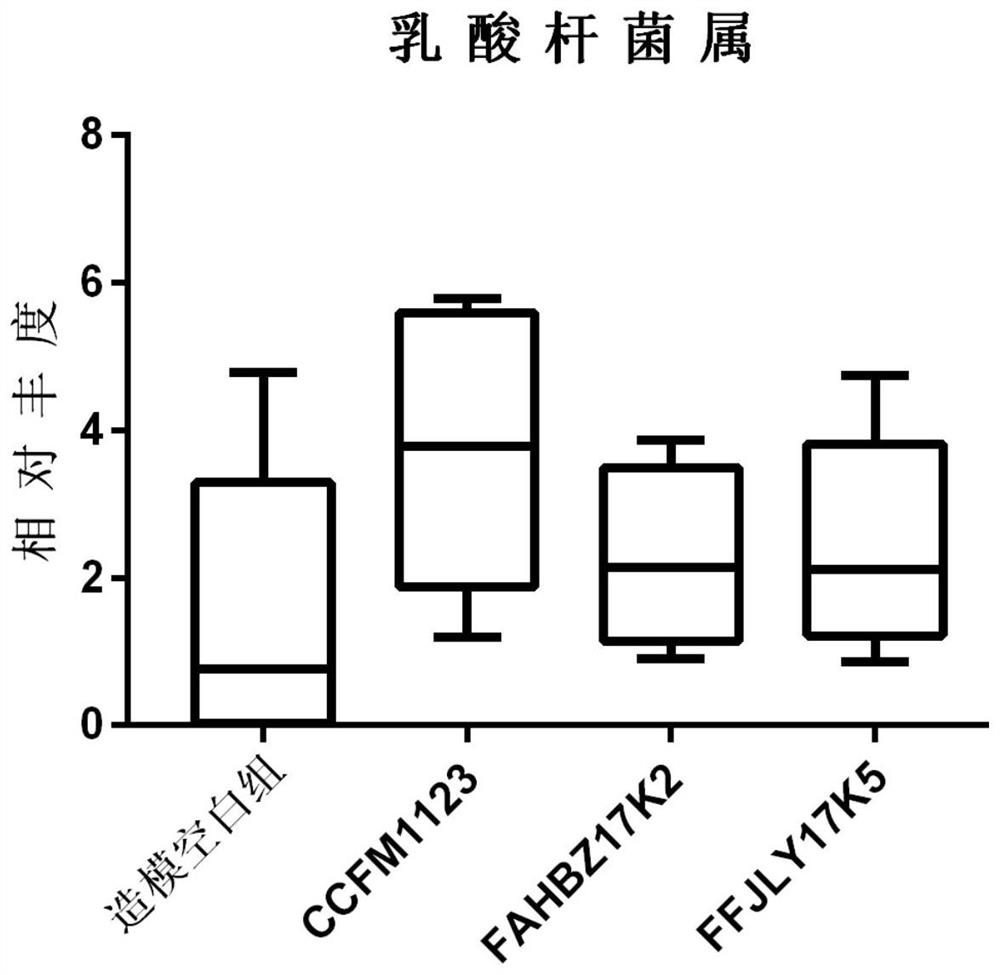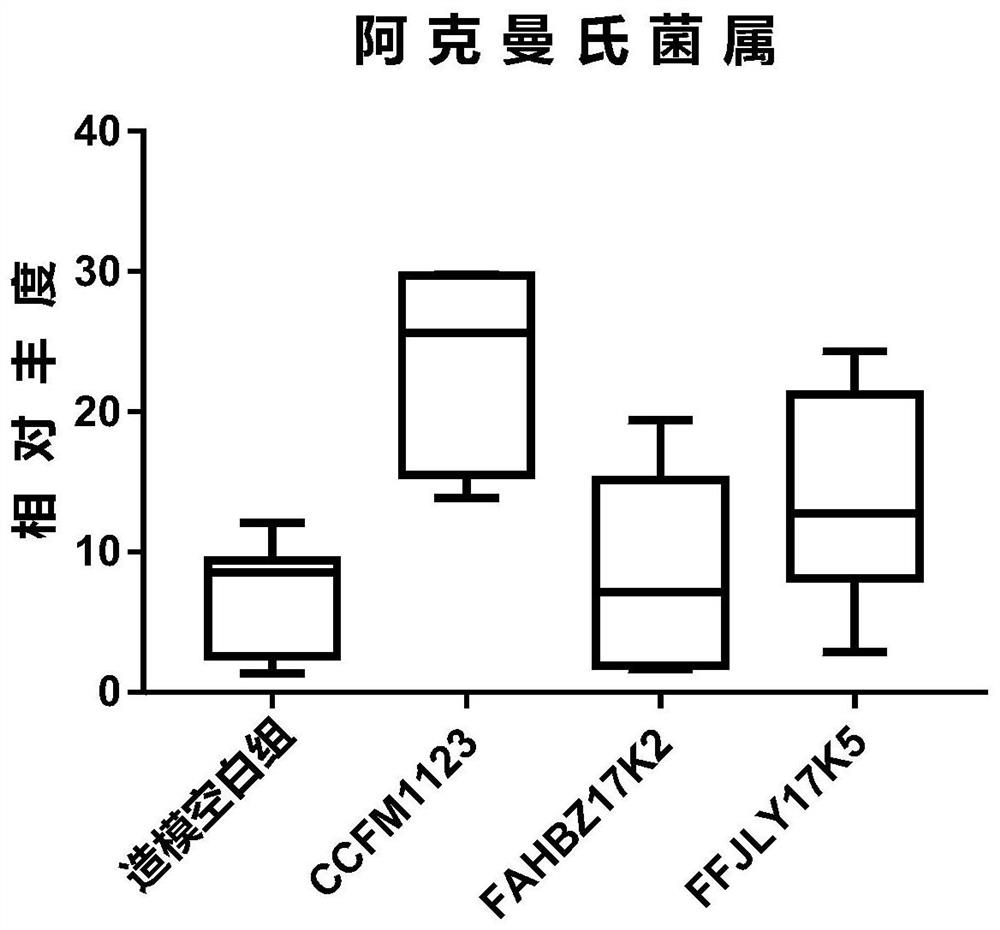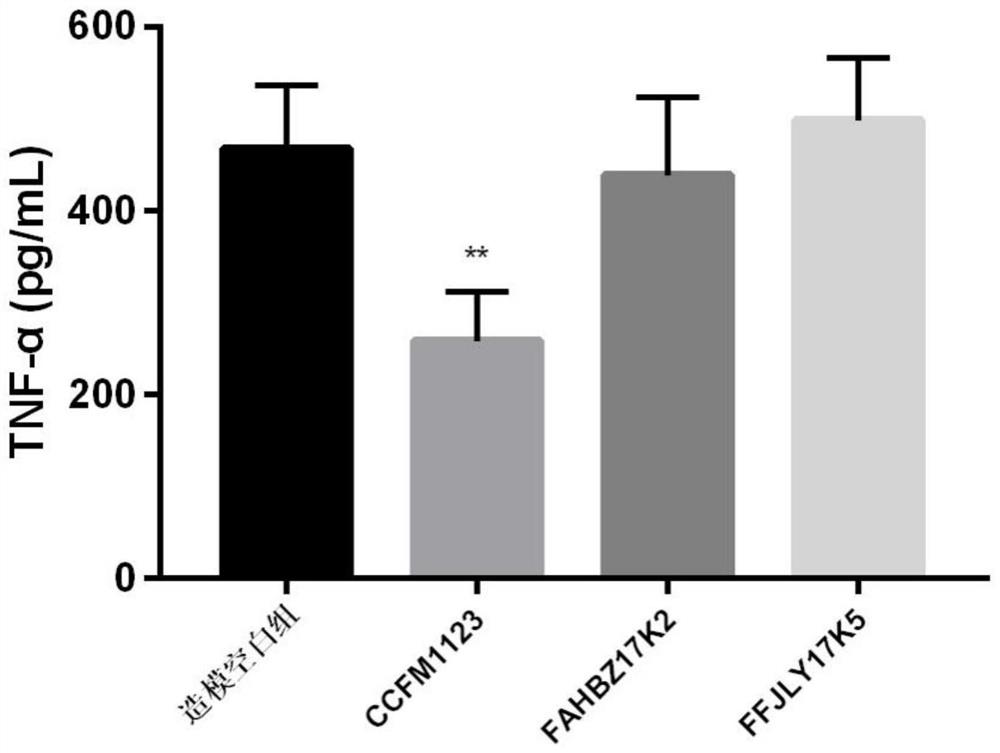Bacteroides fragilis capable of regulating and controlling relative abundance of akkermansia in intestinal tracts
A technology of Bacteroides fragilis and microbial strains, applied in the field of microorganisms, can solve problems such as allergic reactions and patient vomiting, achieve high safety, reduce mucosal bleeding, and reduce intestinal inflammatory cell infiltration.
- Summary
- Abstract
- Description
- Claims
- Application Information
AI Technical Summary
Problems solved by technology
Method used
Image
Examples
Embodiment 1
[0074] Example 1: Acquisition of Bacteroides fragilis
[0075] Specific steps are as follows:
[0076] Taking the feces of a 4-year-old child from Guangxi, China as a sample, draw 0.5mL of the sample and add it to 5mL of BHI liquid medium, and incubate at 37°C for 18-24h to obtain the enriched sample; draw 0.5mL of the enriched The pooled sample was added to 4.5mL sterile saline to obtain 10 -1 Diluent, then draw 0.5mL10 -1 Diluted solution in 4.5mL normal saline to obtain 10 -2 Diluent, according to this operation, successively get 10 -3 , 10 -4 , 10 -5 , 10 -6 Dilution; draw 100 μL of gradient dilution and spread it on BHI solid medium, 10 -4 , 10 -5 , 10 -6 1 plate for each gradient, cultivated at 37°C for 48 hours to obtain colonies; select colonies with typical characteristics of Bacteroides fragilis on BHI solid medium according to the shape, size, edge, and transparency of the colonies, and use an inoculation loop to pick colonies on BHI solid culture Streak o...
Embodiment 2
[0083] Example 2: Effects of Bacteroides fragilis CCFM1123 on the intestinal flora composition of inflammatory mice
[0084] Specific steps are as follows:
[0085] Forty-eight healthy female C57 mice aged 6-8 weeks were randomly divided into 4 groups, 12 mice in each group. The 4 groups were: the model-making blank group and the group fed with B. fragilis CCFM1123, FAHBZ17K2, and FFJLY17K5 bacterial suspensions CCFM1123, FAHBZ17K2, FFJLY17K5 intervention group.
[0086] The experimental process is as follows: the mice in the model-making blank group were given 200 g / L glycerol solution (containing 1 g / L cysteine hydrochloride) once a day at a dose of 0.1 mL, and the mice in the CCFM1123, FAHBZ17K2, and FFJLY17K5 intervention groups According to the dosage of 0.1mL, the bacterial suspension was intragastrically administered once a day for 7 days; on the 8th day of the experiment, the mice in the modeling blank group and the CCFM1123, FAHBZ17K2, FFJLY17K5 intervention groups...
Embodiment 3
[0092] Example 3: Effects of Bacteroides fragilis CCFM1123 on the content of pro-inflammatory factors TNF-α and IL-6 in the serum of inflammatory mice
[0093]Specific steps are as follows:
[0094] Forty-eight healthy female C57 mice aged 6-8 weeks were randomly divided into 4 groups, 12 mice in each group. The 4 groups were: the model-making blank group and the group fed with B. fragilis CCFM1123, FAHBZ17K2, and FFJLY17K5 bacterial suspensions CCFM1123, FAHBZ17K2, FFJLY17K5 intervention group.
[0095] The experimental process is as follows: the mice in the model-making blank group were given 200 g / L glycerol solution (containing 1 g / L cysteine hydrochloride) once a day at a dose of 0.1 mL, and the mice in the CCFM1123, FAHBZ17K2, and FFJLY17K5 intervention groups According to the dosage of 0.1mL, the bacterial suspension was intragastrically administered once a day for 7 days; on the 8th day of the experiment, the mice in the modeling blank group and the CCFM1123, FAHBZ1...
PUM
 Login to View More
Login to View More Abstract
Description
Claims
Application Information
 Login to View More
Login to View More - R&D
- Intellectual Property
- Life Sciences
- Materials
- Tech Scout
- Unparalleled Data Quality
- Higher Quality Content
- 60% Fewer Hallucinations
Browse by: Latest US Patents, China's latest patents, Technical Efficacy Thesaurus, Application Domain, Technology Topic, Popular Technical Reports.
© 2025 PatSnap. All rights reserved.Legal|Privacy policy|Modern Slavery Act Transparency Statement|Sitemap|About US| Contact US: help@patsnap.com



